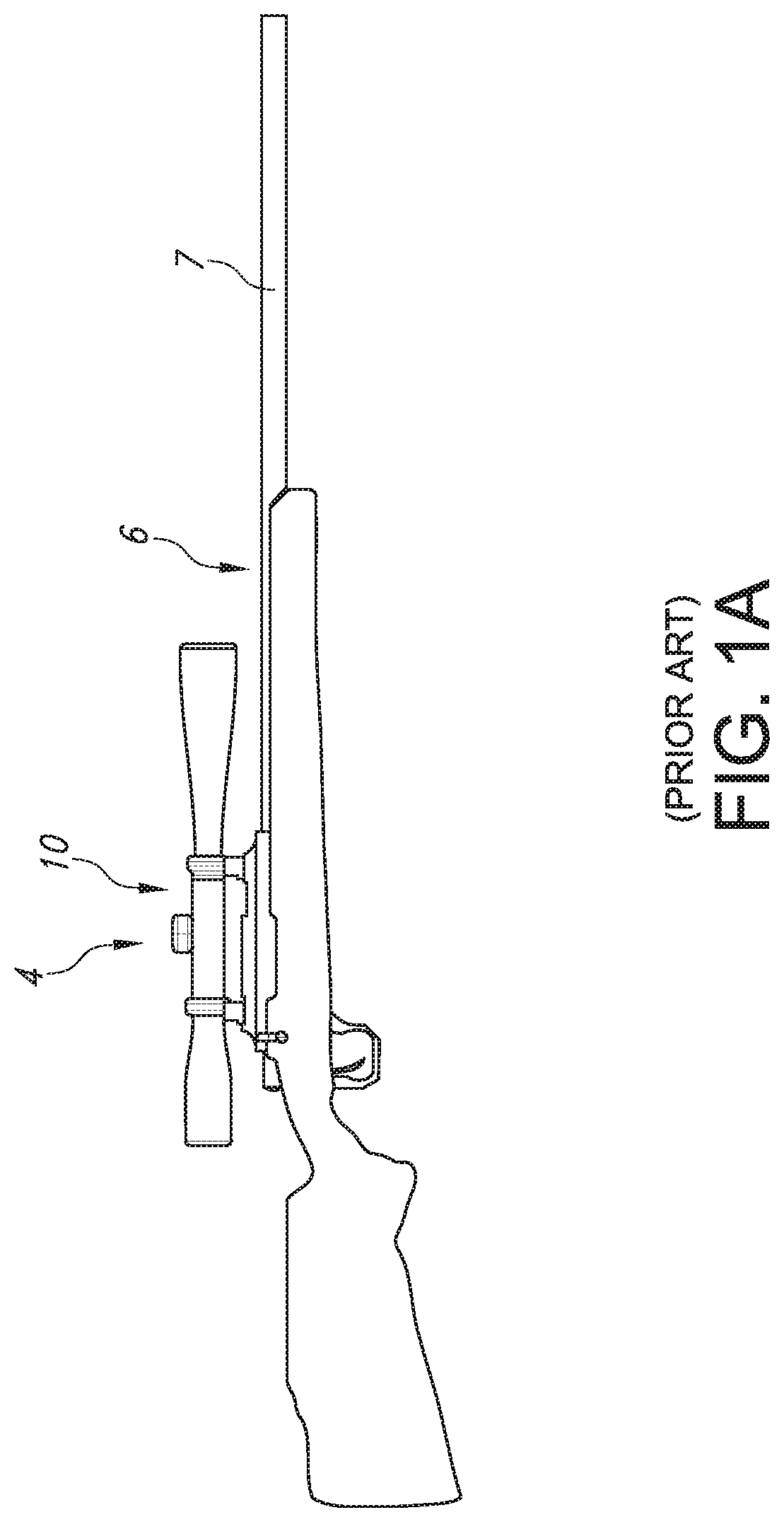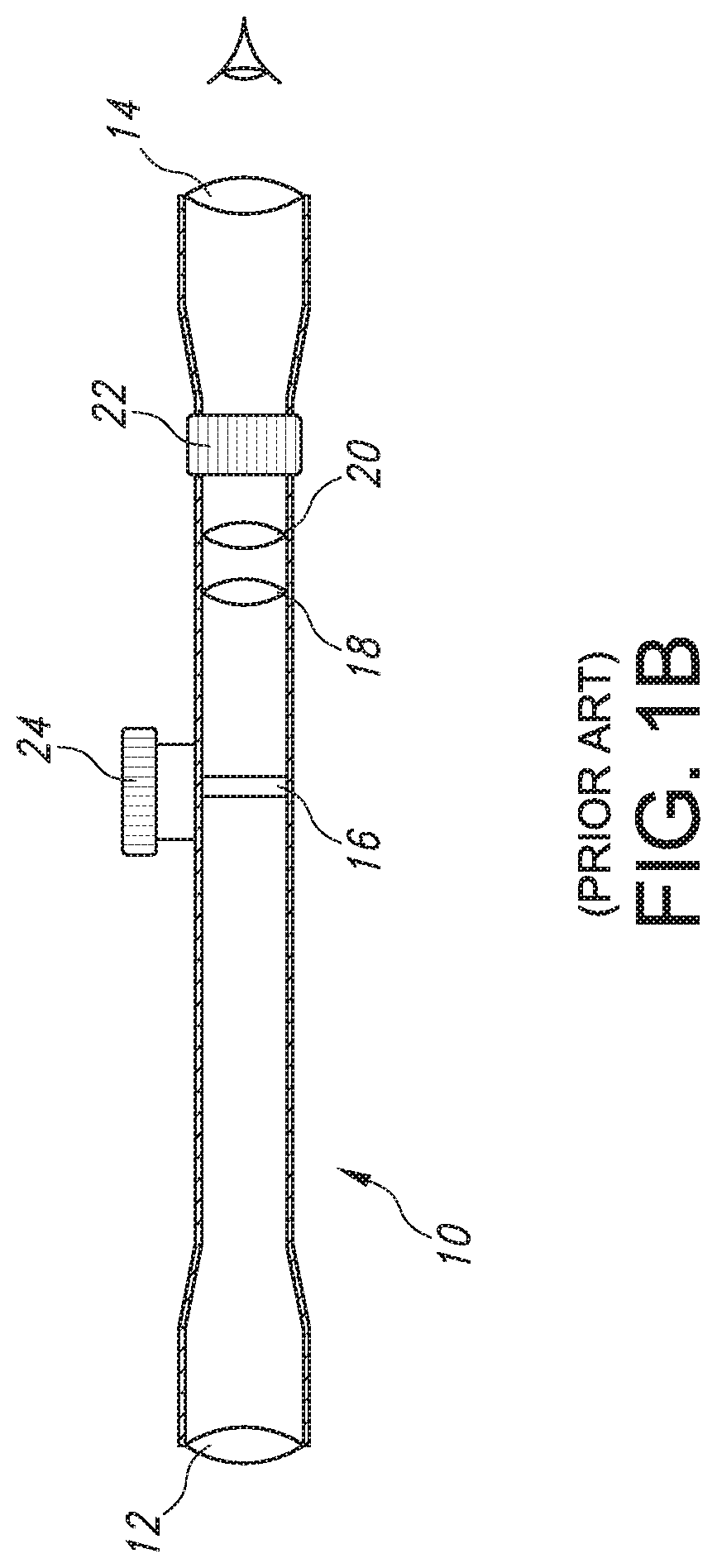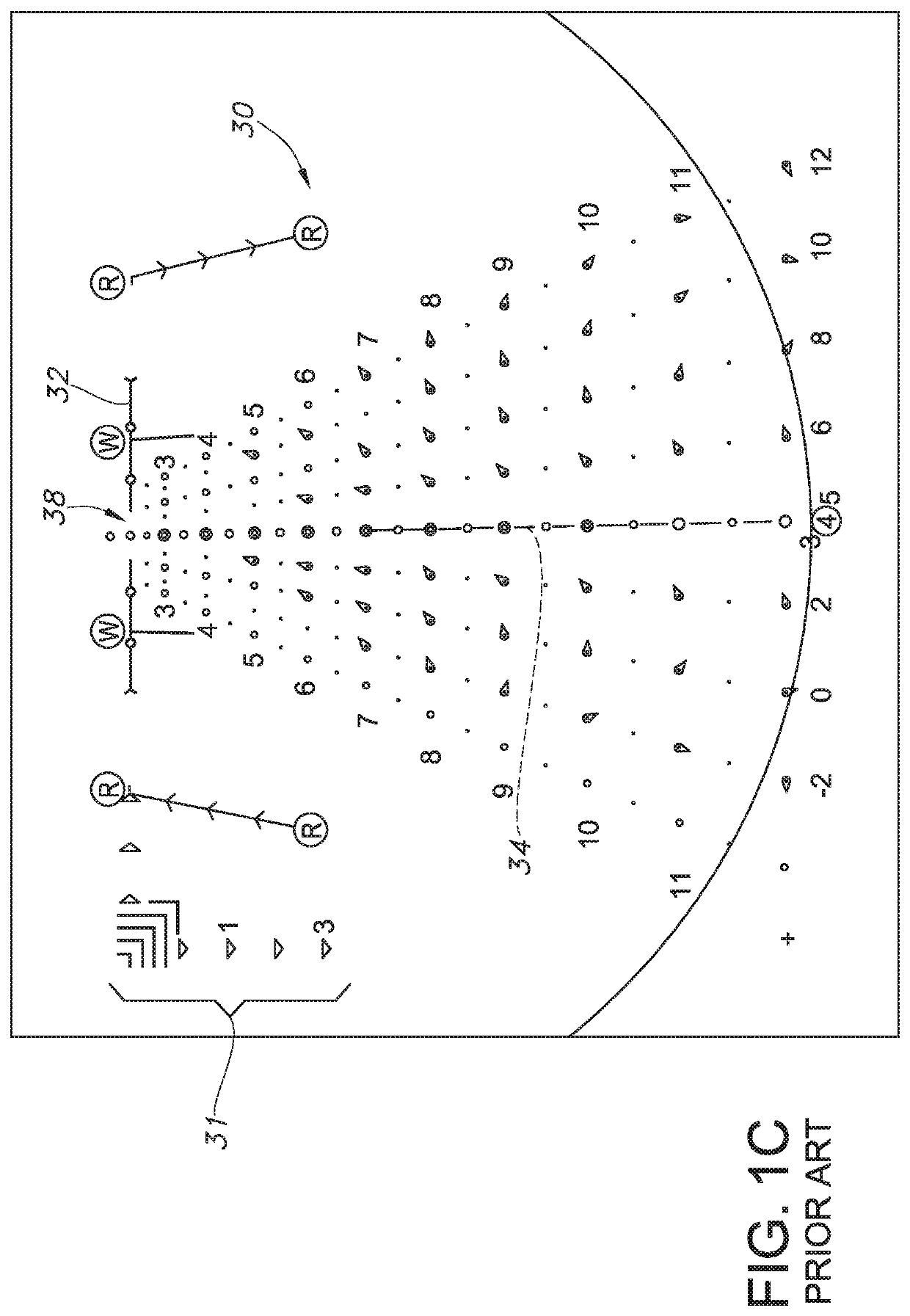Range-finding and compensating scope with ballistic effect compensating reticle, aim compensation method and adaptive method for compensating for variations in ammunition or variations in atmospheric conditions
- Summary
- Abstract
- Description
- Claims
- Application Information
AI Technical Summary
Benefits of technology
Problems solved by technology
Method used
Image
Examples
Embodiment Construction
[0079]In order to provide context for the present invention, please refer again to Prior Art FIGS. 1A-1M. FIG. 1A's projectile weapon system 4 including a rifle 6 with a barrel 7 and a telescopic rifle sight or projectile weapon aiming system 10 are illustrated in the standard configuration where the rifle's barrel 7 terminates distally in an open lumen or muzzle and rifle scope 10 is mounted upon rifle 6 in a configuration which allows the rifle system 4 to be adjusted such that a user or shooter sees a Point of Aim (“POA”) in substantial alignment with the rifle's Center of Impact (“COI”) when shooting or firing selected ammunition (not shown) at a selected target (e.g., 28). FIG. 1B schematically illustrates exemplary internal components for telescopic rifle sight or projectile weapon aiming system 10. As noted above, rifle scope 10 generally includes a distal objective lens 12 aligned with a proximal ocular or eyepiece lens 14 at the ends of a rigid and substantially tubular bod...
PUM
 Login to View More
Login to View More Abstract
Description
Claims
Application Information
 Login to View More
Login to View More - R&D
- Intellectual Property
- Life Sciences
- Materials
- Tech Scout
- Unparalleled Data Quality
- Higher Quality Content
- 60% Fewer Hallucinations
Browse by: Latest US Patents, China's latest patents, Technical Efficacy Thesaurus, Application Domain, Technology Topic, Popular Technical Reports.
© 2025 PatSnap. All rights reserved.Legal|Privacy policy|Modern Slavery Act Transparency Statement|Sitemap|About US| Contact US: help@patsnap.com



